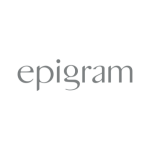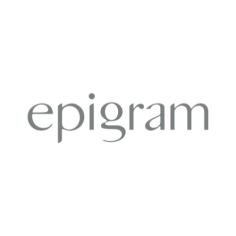Epigram | Five Trends Thought Leadership Series
ARTICLE 2: Interactive Content – The Legal Sector’s Quiet Revolution
Epigram has spent nearly two decades supporting law firms in transforming how they communicate, present, and engage. Whether we’re building brand-aligned template systems, producing animated reports, or helping firms introduce new formats for thought leadership, we’ve seen how content delivery methods can make or break a campaign.
This is the second article in our insight series, exploring the key findings from our 2025 report on branding and communications in the legal sector. This time, we turn to a trend that’s been quietly gathering momentum: the gradual adoption of interactive content.
What’s Changing?
Static content has long been the standard in legal marketing. Think PDFs, long-form text alerts, and downloadable brochures. But the tide is turning. Progressive firms are now experimenting with dynamic, visual content designed to engage – explainer videos, animated infographics, interactive microsites, and client decision tools.
The driver is clear: clients want content they can experience, not just read. In-house counsel are time-poor and digital-first. They expect communications that are clear, helpful, and suited to mobile consumption. Interactivity delivers on that, while also reinforcing a firm’s image as modern and responsive.
Why It Matters
Firms that embrace interactivity aren’t just chasing trends – they’re addressing business needs. An animated explainer can convey complex topics in seconds. A branded webinar series can deepen relationships. A digital credentials deck with embedded links and transitions can win pitches.
These formats boost engagement and brand recall. They humanise the firm and make dry topics digestible. And because so few firms have fully adopted this approach, the first-mover advantage is still very real.
Barriers to Adoption
So why aren’t more firms doing it? The legal sector is famously risk-averse. Marketing teams often face resistance from senior lawyers, budget constraints, or a lack of in-house skills. There’s also the fear of gimmickry – that flashy content might undermine credibility.
The key is strategic execution. Interactive doesn’t have to mean flashy. It can be clean, professional, and entirely on-brand. In our experience, the most successful firms start small: a single digital report, a pilot webinar, or a simple video explainer that proves the concept.
What Legal Marketers Can Do Now
- Identify key content that could benefit from interactivity. Think onboarding, recruitment, or firm updates.
- Start with one flagship format. For example, redesigning a static brochure as a scrollable digital report.
- Partner with designers who understand both legal nuance and digital formats.
- Track engagement metrics. Use data to build the case internally.
Firms that take the leap now will not only modernise their communications but position themselves as forward-thinking and client-friendly.
Next up in this series, we’ll look at the evolving role of LinkedIn in legal branding – and how firms can turn it into their most effective front door. We’ll also explore the power of tone of voice and the untapped potential of internal branding.
To read all the trends in one place, request a copy of the full report as soon as it lands, by emailing us at design@epigram.co.uk



